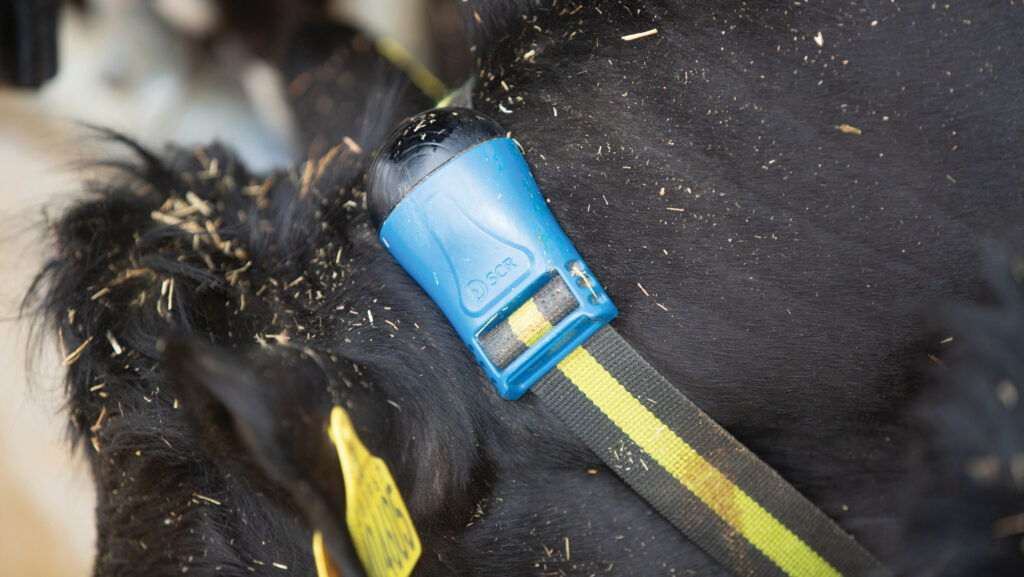Data drives business decisions on US dairy
 © Tim Scrivener
© Tim Scrivener A data-driven culture operates at High Plains Ponderosa Dairy in Kansas, with all business decisions and performance goals based on data.
This is according to chief executive and managing partner Greg Bethard, who told the TotalDairy conference he wouldn’t consider building a dairy without including activity collars and milk meters. “I’m not sure how you can run a dairy without those tools,” he said.
See also: How to use data wisely to inform your dairy business choices
Collars at the 16,000-cow dairy enterprise – which is expanding to 40,000 cows – have been invaluable in monitoring the times of cow ruminating and chewing, as well as eating pace and time.
Greg said he used the “heavy breathing” function a lot to measure heat stress and had changed barn design and ventilation as a result. “At more than 180 minutes a day [of heavy breathing], our cows are hot and we will see intakes and milk drop.”
Having initially looked at every cow’s collar data, staff now only check sick cows. “It is better than locking every fresh cow in a yoke and checking them every day,” he said. “So much less stressful.
“We like to let a cow be a cow, and collars and sorting gates allow us to achieve that for 11 hours a day,” he said.
Another essential for the business is an excellent internet connection. “We have fibre run to every building on our site; our dairy shuts down if we haven’t got that internet connection. We’ve invested a lot of money in [automated] parlours, sort gates, milk meters, fertility monitoring,” he explained.

Greg Bethard © Sam Carpenter
Data analysis
Greg said it would also be difficult to run the business without the hundreds of spreadsheets, containing an “astounding amount of raw data”. He is now looking at how to incorporate artificial intelligence to identify patterns and weak areas, using all of the farm’s data.
But he stressed that a dairy business owner needed to know what they wanted and must set up their system to collect and analyse their own data accurately. This is before selling the metrics to the farm team and making sure everyone understands them.
It was also important to grasp normal variations within the data, to compare with differences that might indicate a problem, he pointed out.
“Know your business model and live it. Then choose metrics and data that fit your model. For example, milk per cow doesn’t mean that much to us – it doesn’t fit our model. Selling the most milk a day is a different goal to maximising milk per cow.
“Our most important metrics are breakeven milk price and static variable margin – everything else is secondary and individual cow metrics are less important. Nothing else really matters if we achieve these.”
Money-corrected milk (MCM) is monitored instead of energy or fat-corrected milk, which are biological measures.
“We do daily MCM for the herd, monthly for the cow, and also income over feed costs (IOFC) per cow. Culling decisions are based on IOFC, not just milk yield.”
Information is presented to managers as graphs and charts, communicating via email or text and Dropbox for large files.
- Greg Bethard was speaking at the recent TotalDairy conference in Stratford-upon-Avon.
High Plains Ponderosa dairy metrics
Daily
- Milk sold
- Parlour reports of cow throughput, cows undermilked and so on
- Heavy breathing – cow collars measure heat stress
- Static variable margin in dollars a day = income / feed costs – (dry cow feed + replacement cost + supplies).
Weekly
- Fresh cow health and metabolics
- Cows that have left the herd
- Pregnancy goals
- Breeding by semen type and projected number of calves born
- Vet checks the results.
Monthly
- Cows sold/died (the dairy lists 17 reasons for cows exiting the herd)
- Beef cattle sold.
Source: Greg Bethard
